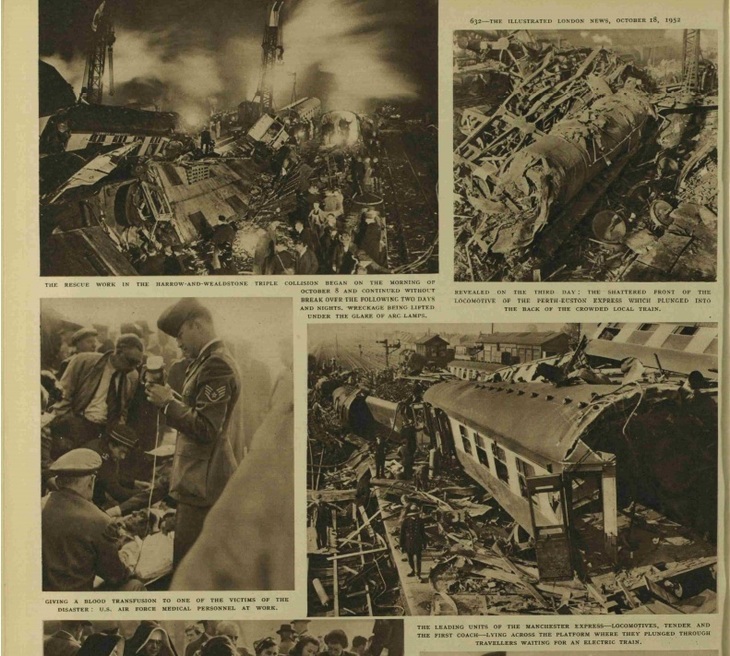
The timing couldn't have been worse. It was At 8.18am — rush hour — on 8 October 1952, when a Perth to Euston express sleeper hurtling through fog, overshot the signals outside Harrow and Wealdstone station.
The express ploughed into the back of a stationary train at Harrow, headed to Euston from Tring. The Tring train had around 800 passengers on board, owing to the next train being cancelled due to fog. The back three wooden coaches of the Tring train were telescoped into one, killing many instantly. Parts of the wreckage were pushed onto the adjacent northbound track.

The horror had just begun. Within seconds of the collision, a third train — a double-headed express from Euston to Liverpool — hit debris from the initial collision at about 60mph. Its two locomotives rode up onto a platform, while many of its carriages were flipped into the air, careering into a footbridge.
Locals, including the Salvation Army, Women's Voluntary Service and members of the US Air Force stationed nearby, searched the wreckage and ripped up old sheets to make bandages, but it was instantly clear they were on the scene of a tragedy. The same day, Queen Elizabeth sent what must have been one of her first telegrams of sympathy: "I am deeply distressed to learn of the railways accident at Harrow this morning," she wrote to the Minister of Transport.
In all, over 200 wagons of debris were removed from the station. 112 people were killed, 340 injured*. It's thought that a handful of commuters on the platforms could have been killed by the Liverpool-bound locomotives too.
This was — and remains — the worst UK rail disaster in peacetime. Only the Gretna Green crash of 1915 had more deaths. Of Harrow's 121 fatalities, it's thought just seven were from the Liverpool-bound train — quite possibly, because it had newer, sturdier stock.

The Liverpool-bound locomotives didn't fare so well; both were scrapped.
Incredibly, the Perth engine that had caused the accident was later rebuilt, and went on to be in service for another 13 years. The Tring engine — as opposed to its train, some of which was obliterated — was largely undamaged.
An inquiry was held, fittingly at Euston station; this was, after all, the origin or destination of all three trains. It was covered in the usual melodramatic newsreel style of the day:
The outcome was the introduction of the Automatic Warning System, in 1956.
*The reliable Brewer's Dictionary of Phrase and Fable claims 122 were killed and 150 were injured, although all other reports we've found go with the numbers we've given in the article.




